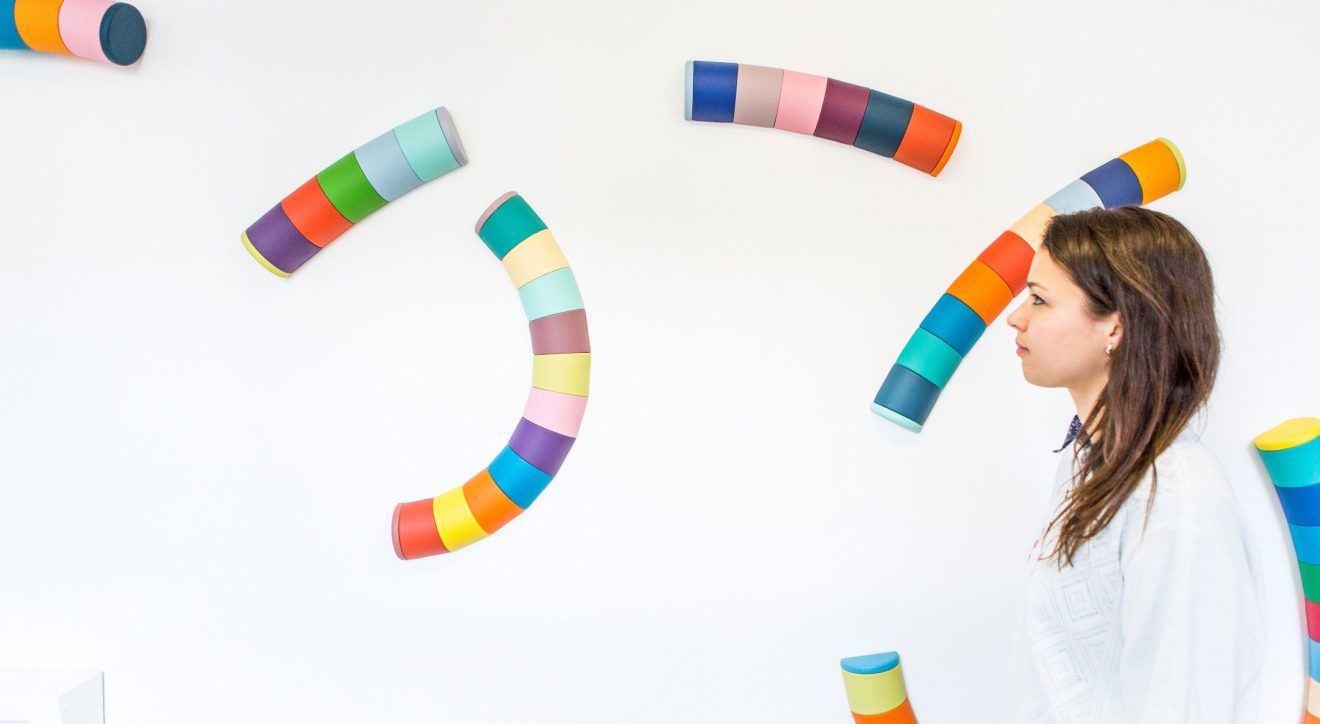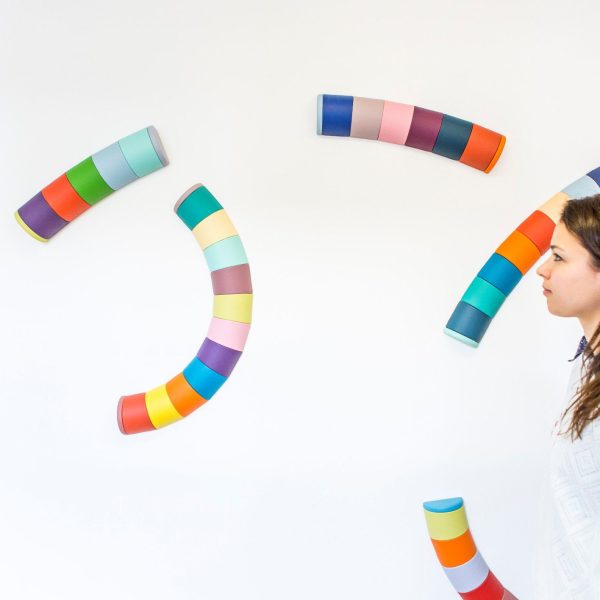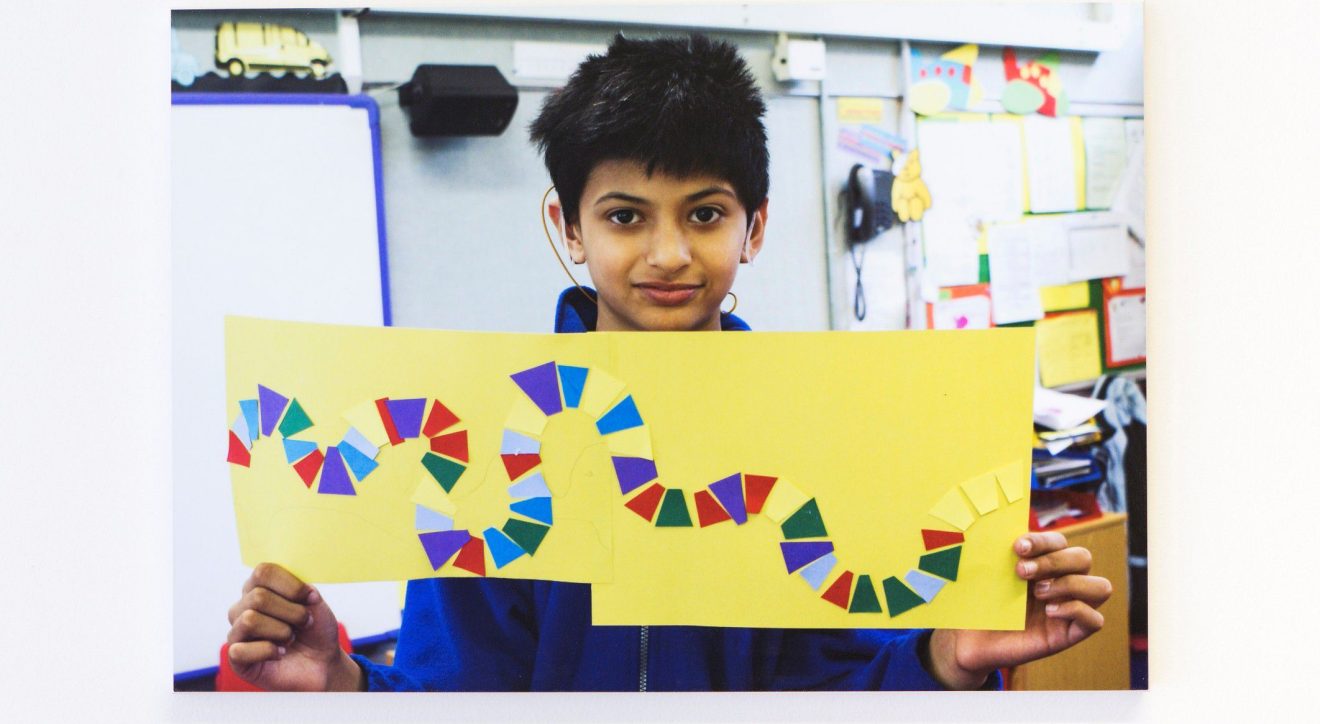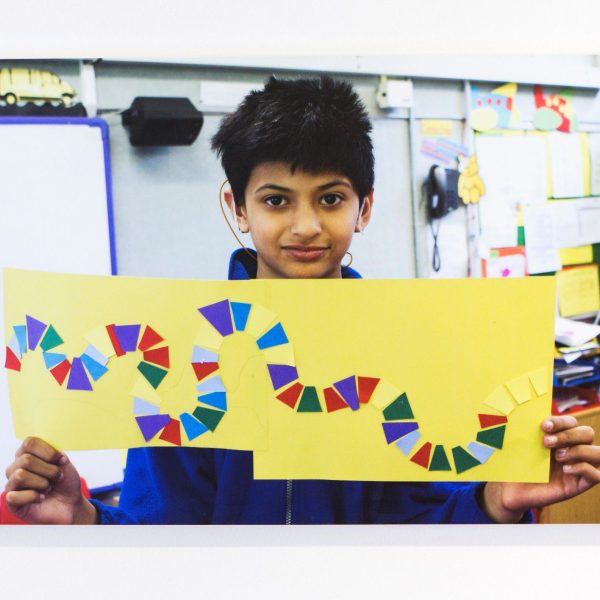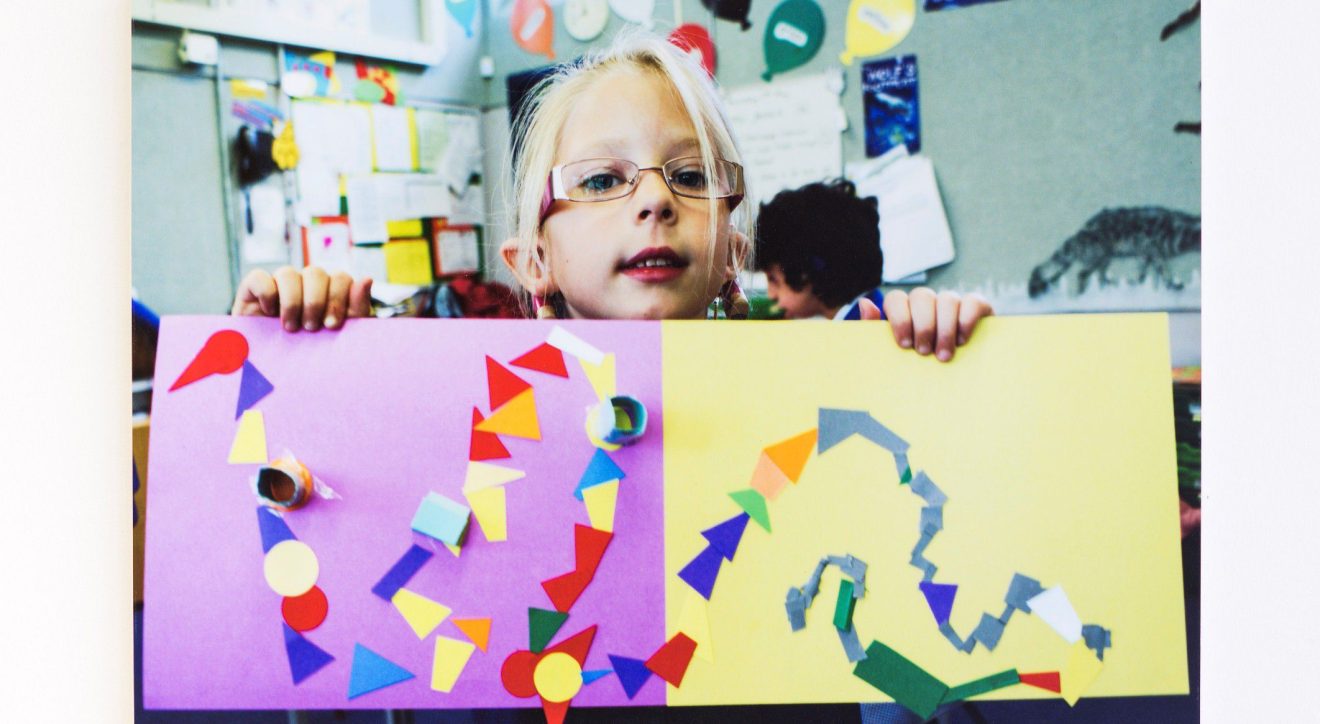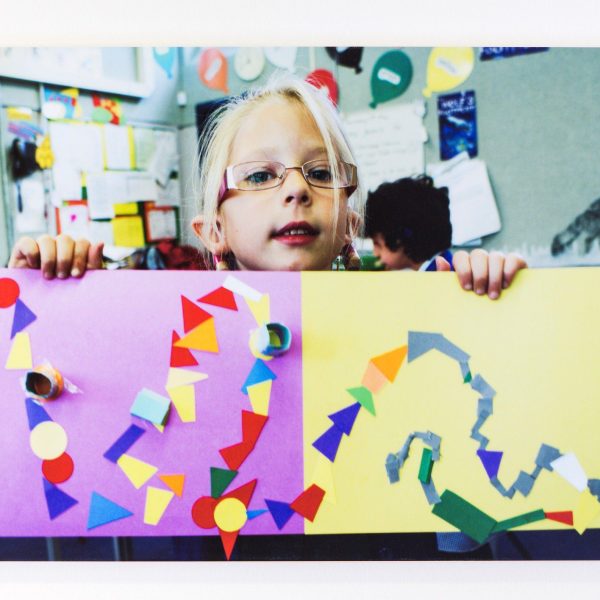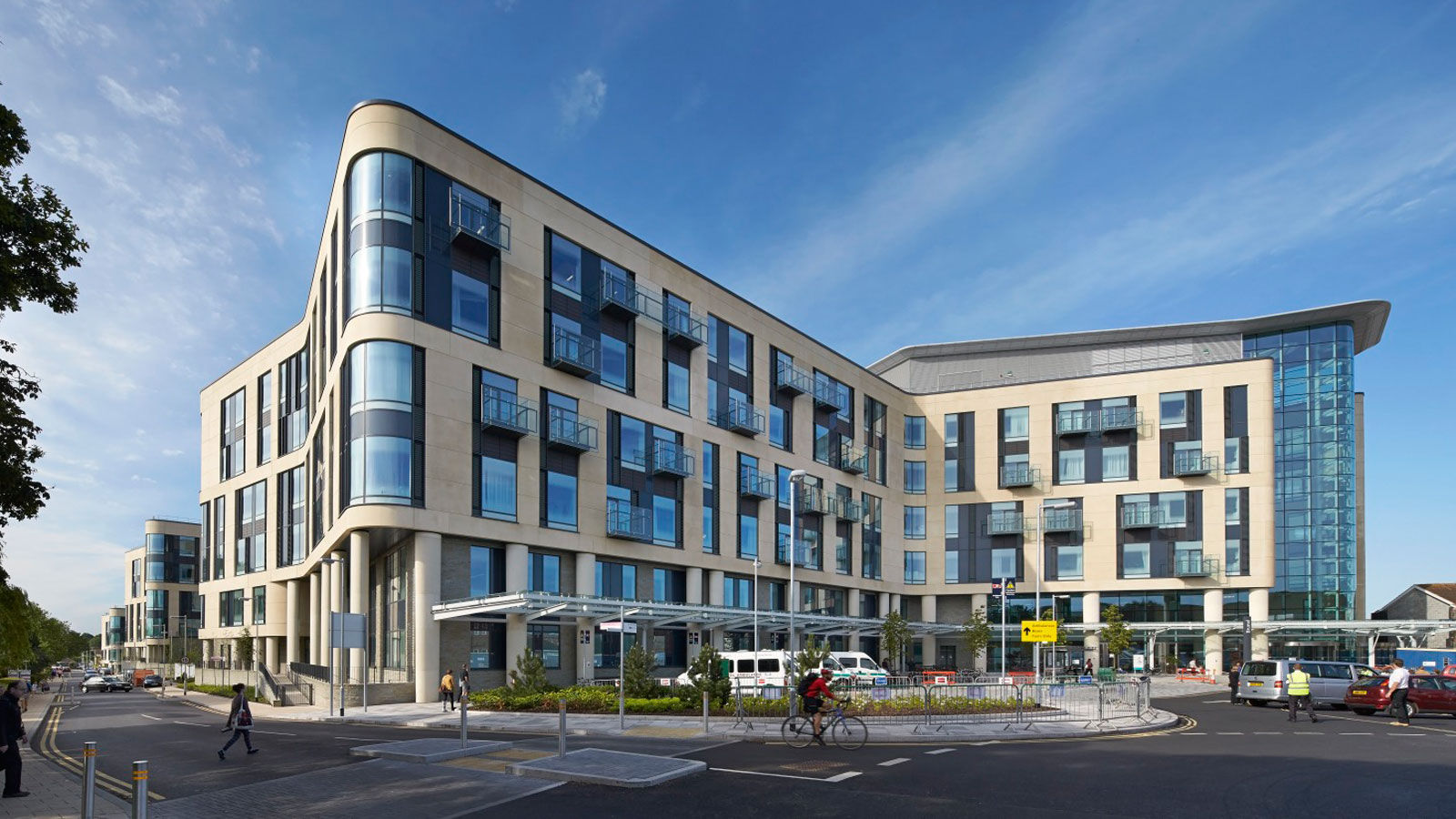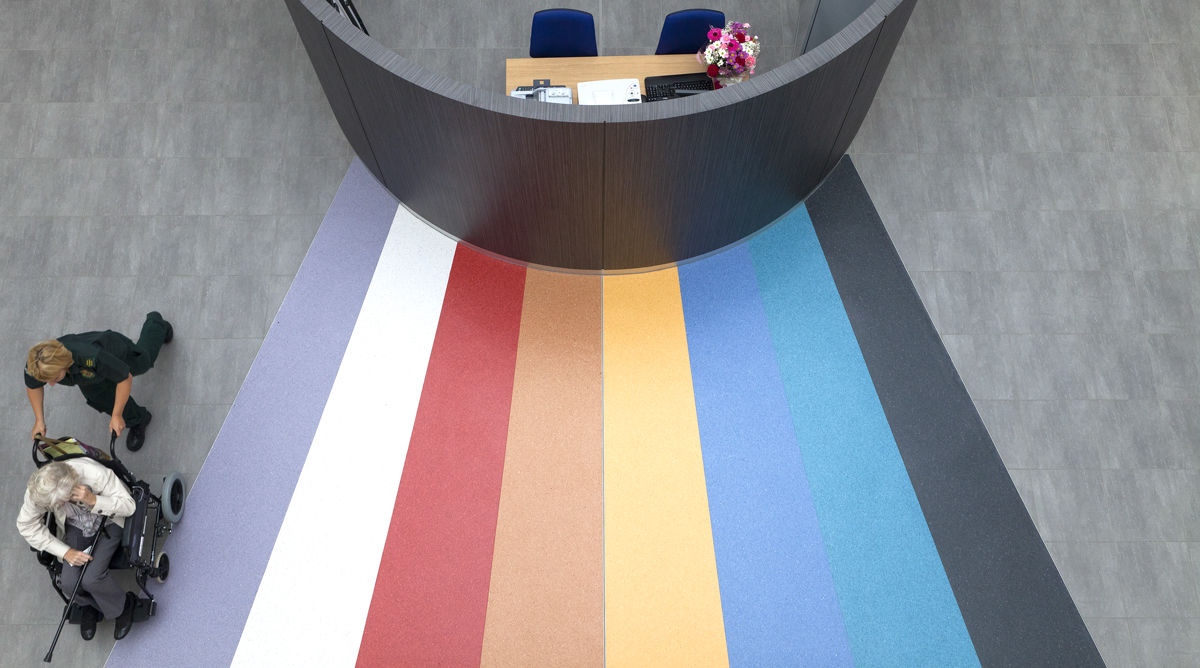
Synopsis
Chorus was developed by Bristol-based artist Seamus Staunton following a series of workshops with children at the Children’s Hearing Centre, St Michael’s Hospital; the Hearing Impaired Resource Base, Henbury Court Primary School; and Bristol Children’s Hospital.
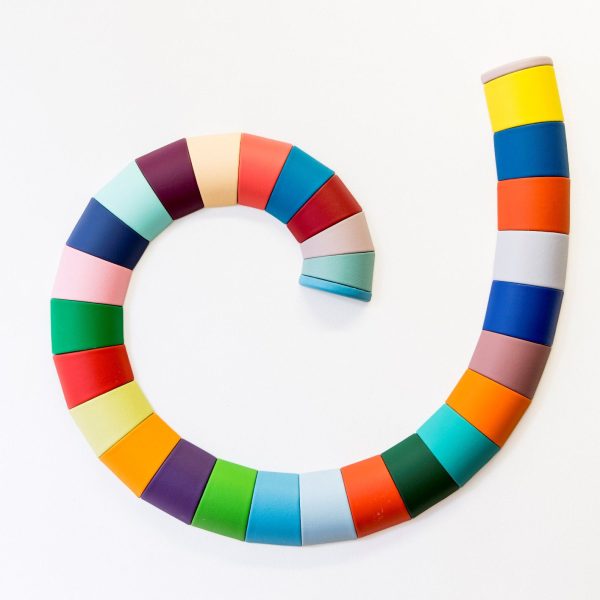
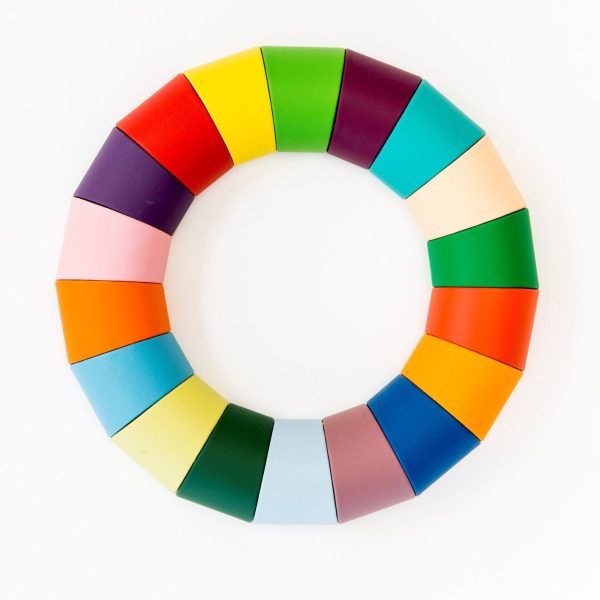
The workshops explored themes related to sound, form and colour. Sound wave patterns, graphic music scores and diagrams of the structure of the ear informed the children’s endeavours to render sonic rhythms in visual form.
Colour has played an integral part in Seamus’s previous work. An experienced sculptor, he has carried out a number of public art commissions and has exhibited widely, both nationally and internationally.
The commission is part of a joint arts programme for the Bristol Royal Infirmary Redevelopment (BRI Redevelopment) and Centralisation of Specialist Paediatric Project (CSP Project) which consists of a number of refurbishments and new builds for the Trust. Chorus was funded by Wallace & Gromit’s Grand Appeal which is supporting the creation of a child-friendly environment with integrated artworks to enhance the redevelopment of Bristol Royal Hospital for Children.
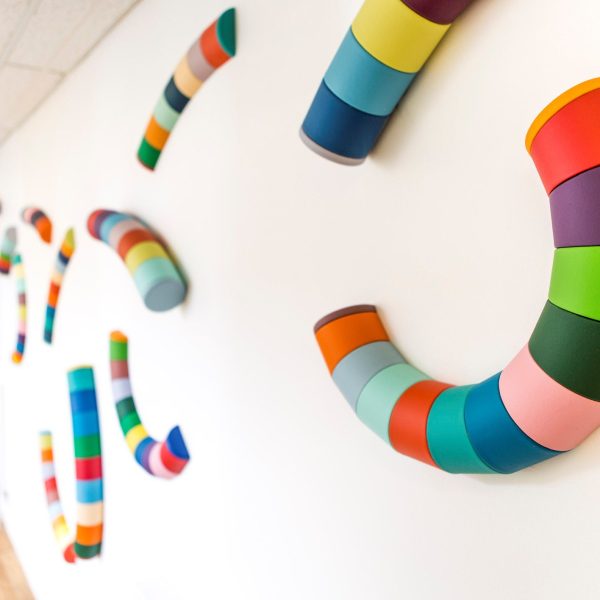
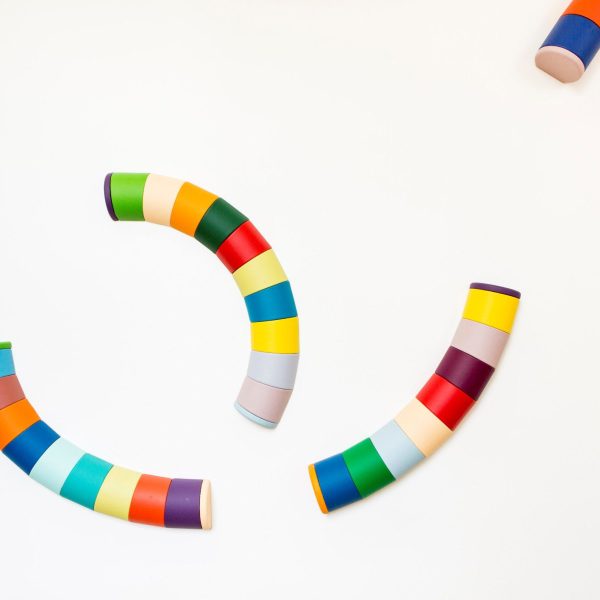
Seamus Staunton
Seamus Staunton is interested in the potency of sound and the way that music maps emotion and mood. Previous sculptures have often employed forms deriving from sound wave patterns and frequency graphs. Some have been likened to the sound boxes of musical instruments. Staunton’s recent wall-mounted Constellation series have a highly reflective coloured external shell enclosing a flock -lined interior chamber in contrasting colour. A number of circular apertures punctuate the surface drawing the viewer’s gaze to an inner space that remains elusive, their soft matt interiors suggesting muffled intimacy. The regular rhythm set up by the pattern of holes suggests a cellular form with the potential to grow in any direction.
Other recent series deal with landscape, the natural and the man-made. Much of what we think of as natural is often the result of human contrivance and the garden is nature at its most artificial. These works make reference to the stylised landscaping epitomised by golf course design as well as the world of interior furnishing. Surfaces are clad in the same green baize used on billiard and snooker tables, originally used to convey the sense of a playing field, a model of the outdoors. With their green, upholstered slopes and geometric contours enclosing a pool of perfect blue water, the sculptures of the Reservoir series suggest an idealised topography. Reservoir III can be read as a hill containing a tarn or, from a distance, as a manicured shrub, a piece of topiary. A container for liquid, it is also a repository for ideas about landscape and art, nature and cultivation.
Willis Newson is a leading Bristol-based independent arts consultancy specialising in creative approaches to improving health and wellbeing. It develops public art strategies for new builds and refurbishments, develops and manages public art plans and public engagement programmes, delivers training for artists and performers in healthcare settings and provides advice and guidance on the design and implementation of projects to promote healthy environments and improve health and wellbeing.
